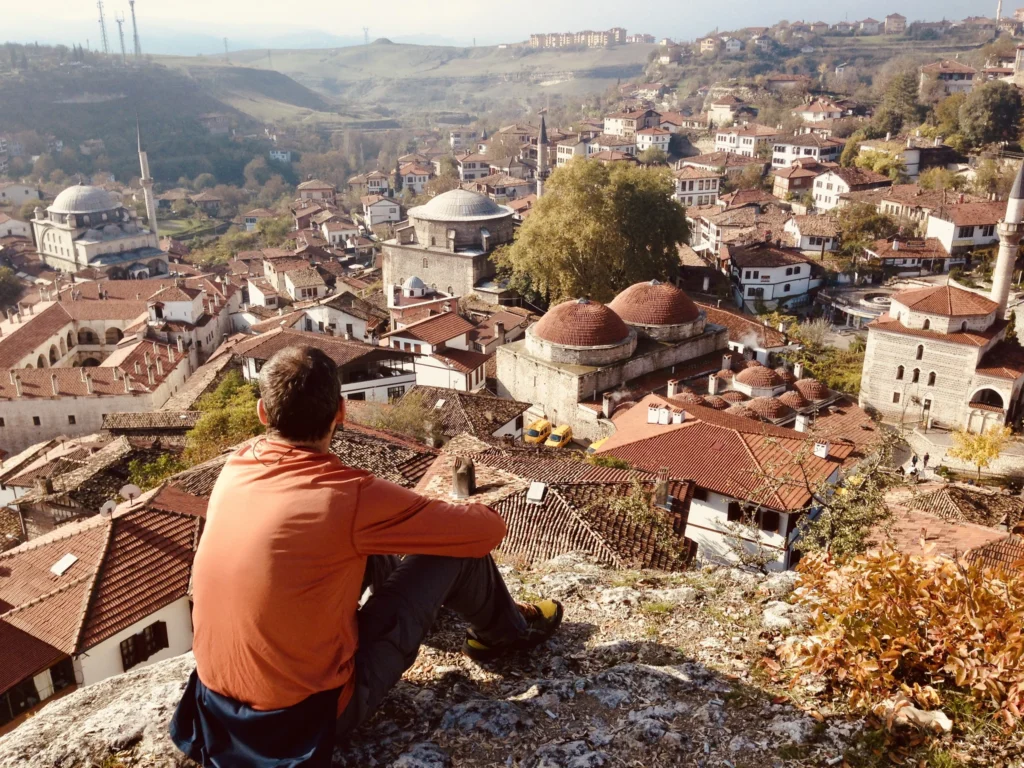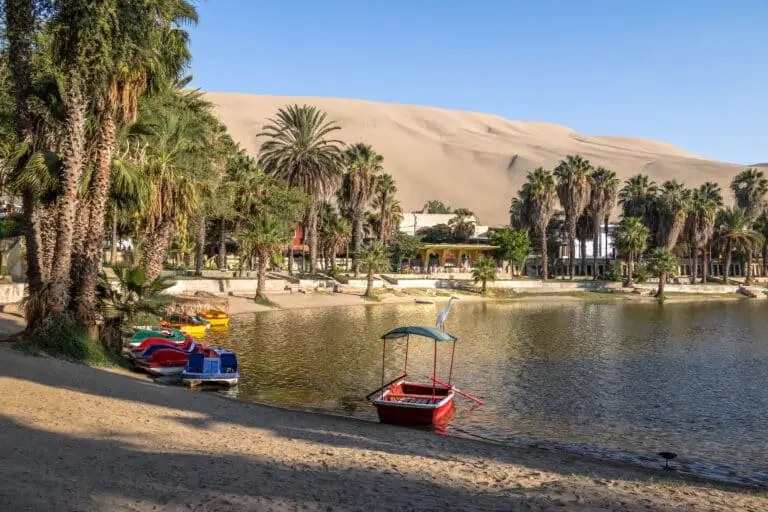Changing Turkish visa requirements makes travel to Turkey easier than ever
Starting January 1, 2024, Americans who travel to Turkey can now enjoy visa-free stays of up to 90 days within any 180-day period.
The streamlined immigration process means travelers only need a simple passport check upon arrival. This policy shift is a game-changer, making it easier for Americans to explore the enchanting landscapes of Cappadocia, delve into the bustling energy of Istanbul’s Grand Bazaar, or unwind by the turquoise waters of the Aegean coast.
It’s worth noting that this visa-free entry is tailored for tourist and short-term business trips. Travelers eyeing extended stays or different purposes are advised to consult Turkish authorities for comprehensive visa requirements.
With these changes now in effect, we wanted to write about our favorite destinations from our multiple trips to Turkey’s historical treasures, picturesque landscapes, and lively culture.

Why Travel to Turkey Should be at the Top of Your List
Turkey’s Spiritual Duo: Hagia Sophia & Blue Mosque
In the heart of Istanbul’s Sultanahmet, two architectural wonders stand side by side, beckoning travelers into the city’s soul. The Hagia Sophia, a Byzantine masterpiece, captivates with its grandeur. Originating as a 6th-century cathedral, its soaring dome and intricate mosaics tell tales of Eastern Christianity’s spiritual journey through the ages. From Byzantine cathedral to Ottoman mosque to a secular museum and back to a place of worship, its history is as rich as its artistry. Adjacent to this cultural gem is the Blue Mosque, a 17th-century ode to Ottoman opulence. With cascading domes and minarets adorned in blue, it mirrors the grandiosity of its neighbor. Inside, worshippers are embraced by over 20,000 blue tiles, creating an atmosphere of divine tranquility.
Harmony in Faith: A Sonic Ballet of Calls to Prayer
These architectural siblings engage in a daily dialogue of faith. Melodic calls to prayer echo from both structures five times daily, creating a mesmerizing back-and-forth resonating through the centuries. This tradition, a blend of sacred sounds and architectural splendor, transforms the urban landscape into a symphony of spirituality. The Hagia Sophia and the Blue Mosque harmonize their calls above the bustling city, an auditory reminder of Istanbul’s profound tapestry of faith and history. This experience, a true testament to the value of exploring the world and immersing oneself in different cultures, lingers as a soul-stirring memory.
Beyond the iconic Hagia Sophia and Blue Mosque, a treasure trove of historical and cultural gems awaits exploration. The Topkapi Palace, once the opulent residence of Ottoman sultans, showcases exquisite collections of Islamic artifacts and imperial treasures. Nearby, the Basilica Cistern, an ancient underground water reservoir, captivates with its mysterious atmosphere and Medusa-head columns. The Grand Bazaar, one of the world’s oldest and largest covered markets, beckons with its labyrinthine alleys filled with vibrant stalls selling everything from spices to carpets. For a panoramic perspective, the Galata Tower offers sweeping views of the city, spanning the bustling Golden Horn to the majestic Bosphorus. Istanbul’s rich history comes alive at the Archaeological Museum, housing an extensive array of artifacts from civilizations spanning millennia. Each attraction contributes to Istanbul’s allure, weaving together the threads of its multifaceted past.

Due east of Istanbul is the UNESCO World Heritage site of Safronbolu, renowned for its Ottoman architecture displayed in the well-preserved historic town with cobblestone streets. The Safranbolu Houses Museum exhibits the architectural finesse of Ottoman-era homes, offering a glimpse into the town’s heritage. Safranbolu immerses visitors in centuries of history, making it a captivating destination for those eager to explore Turkey’s cultural legacy.

Fairy Towers of Cappadocia
Cappadocia, a region in central Turkey, boasts a distinctive landscape marked by unique rock formations and fairy chimneys. The area is renowned for its hot air balloon rides, providing breathtaking views of these geological wonders. The underground cities of Cappadocia, carved into soft volcanic rock, serve as a testament to ancient civilizations. Accommodations in the region are notably unique, with many visitors choosing to stay in cave hotels that blend seamlessly with the natural surroundings. This surreal landscape, shaped by volcanic activity, offers a one-of-a-kind experience, combining geological marvels with historical intrigue.
Safranbolu is renowned for its Ottoman architecture, showcased vividly in the well-preserved historic town with cobblestone streets. The Safranbolu Houses Museum exhibits the architectural finesse of Ottoman-era homes, offering a glimpse into the town’s heritage. With its UNESCO-listed Old Town, Safranbolu immerses visitors in centuries of history, making it a captivating destination for those eager to explore Turkey’s cultural legacy.

Pamukkale: The Cotton Castle
Heading back west towards the Aegean Sea from Cappadocia is the geographical wonder of Pamukkale. A Turkish word that literally translates to “cotton castle,” Pamukkale describes the natural wonder it refers to: cascading travertine terraces resembling a dazzling white castle made of cotton. These terraces were formed by the deposit of carbonate minerals from thermal waters. The mineral-rich thermal waters offer a unique experience at Cleopatra’s Pool, inviting visitors to take a dip in these natural rejuvenating waters. Delve into the captivating blend of history and serenity as you wander through the ruins of Hierapolis Ancient City. This archaeological wonder, adjacent to Pamukkale, unveils the remnants of a once-thriving Greco-Roman city. Imagine strolling through well-preserved theaters, temples, and monumental gates that echo tales from a bygone era. The ancient city also boasts an impressive necropolis, where intricately designed tombs pay homage to the departed.

Ephesus: A Really Old Library
Completing our horseshoe itinerary around Turkey is Ephesus, an ancient site sitting on the shores of the Aegean Sea. Designated as a UNESCO World Heritage Site, the ruins of Ephesus beckon with a tapestry of ancient wonders. The Library of Celsus, an architectural gem, unveils its grandeur with a well-preserved facade—a testament to Roman ingenuity. As you tread the stones of the Great Theatre, imagine the echoes of ancient spectators, feeling the resonance of a colossal amphitheater that once hosted vibrant performances. The Temple of Artemis, a bygone Wonder of the Ancient World, stands in remnants, offering glimpses into its majestic past. Each step through Ephesus is a journey through time, with intricately carved marble streets and structures whispering tales of civilizations long past. The Grand Theater, accommodating up to 25,000 spectators, immerses you in the scale of ancient gatherings. With its storied past and architectural marvels, Ephesus invites modern explorers to connect with the rich history etched into its stones.








